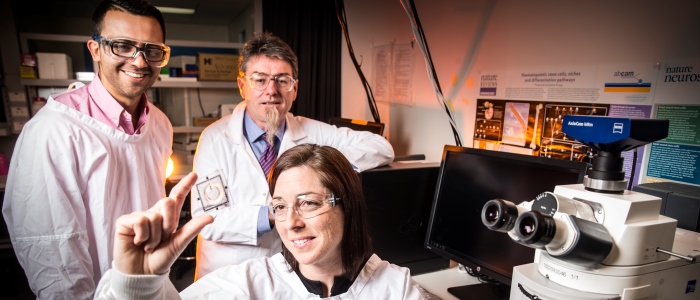News
3D printing bone tissue
Jun 28 2022
The brain is amazingly complex, with around 86 billion nerve cells. The challenge for researchers to create bench-top brain tissue from which they can learn about how the brain functions, is an extremely difficult one.

Researchers at the ARC Centre of Excellence for Electromaterials Science (ACES) have taken a step closer to meeting this challenge, by developing a 3D printed layered structure incorporating neural cells, that mimics the structure of brain tissue.
The value of bench-top brain tissue is huge. Pharmaceutical companies spend millions of dollars testing therapeutic drugs on animals, only to discover in human trials that the drug has an altogether different level of effectiveness. We’re not sure why, but the human brain differs distinctly from that of an animal.
A bench-top brain that accurately reflects actual brain tissue would be significant for researching not only the effect of drugs, but brain disorders like schizophrenia, and degenerative brain disease.
ACES Director and research author Professor Gordon Wallace said that the breakthrough is significant progress in the quest to create a bench-top brain that will enable important insights into brain function, in addition to providing an experimental test bed for new drugs and electroceuticals.
“We are still a long way from printing a brain but the ability to arrange cells so as they form neuronal networks is a significant step forward,” Professor Wallace said.
To create their six-layered structure, researchers developed a custom bio-ink containing naturally occurring carbohydrate materials. The custom materials have properties that allow accurate cell dispersion throughout the structure, whilst providing a rare level of protection to the cells.
The bio-ink is then optimised for 3D-bioprinting, and developed for use in a standard cell culturing facility without the need for expensive bio-printing equipment.
The result is a layered structure like brain tissue, in which cells are accurately placed and remain in their designated layer.
“This study highlights the importance of integrating advances in 3D printing, with those in materials science, to realise a biological outcome,” Professor Wallace said.
“This paves the way for the use of more sophisticated printers to create structures with much finer resolution.”
The research, funded through Professor Gordon Wallace’s Australian Laureate Fellowship, is published in Biomaterials.
Pictured: At back left, research authors Rodrigo Lozano, Gordon Wallace and Elise Stewart at front.













